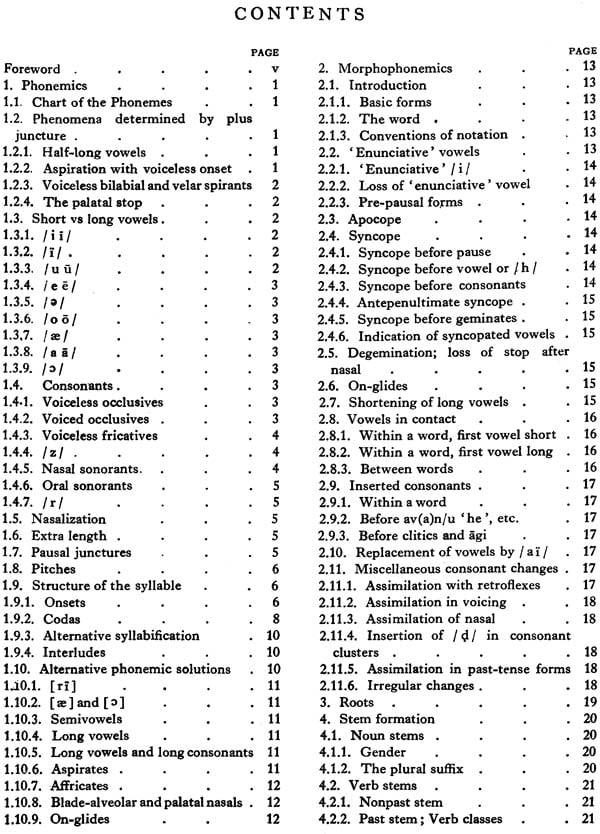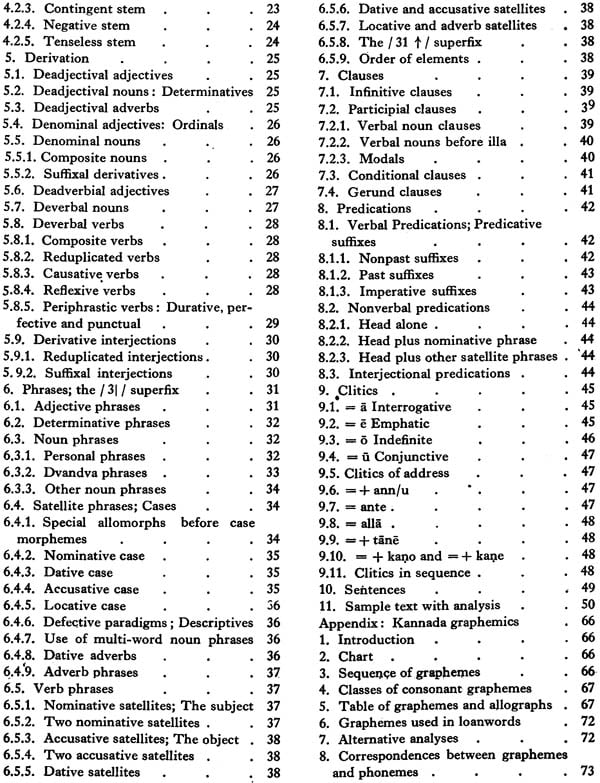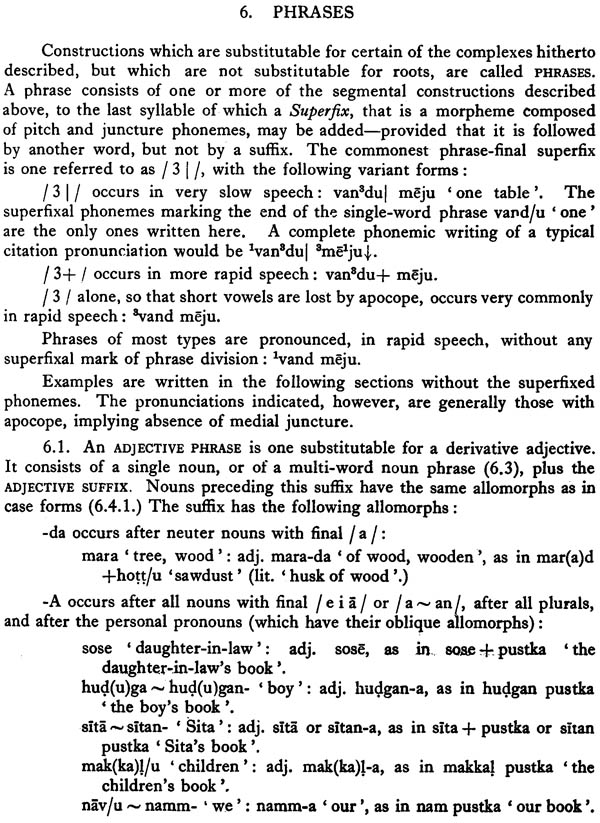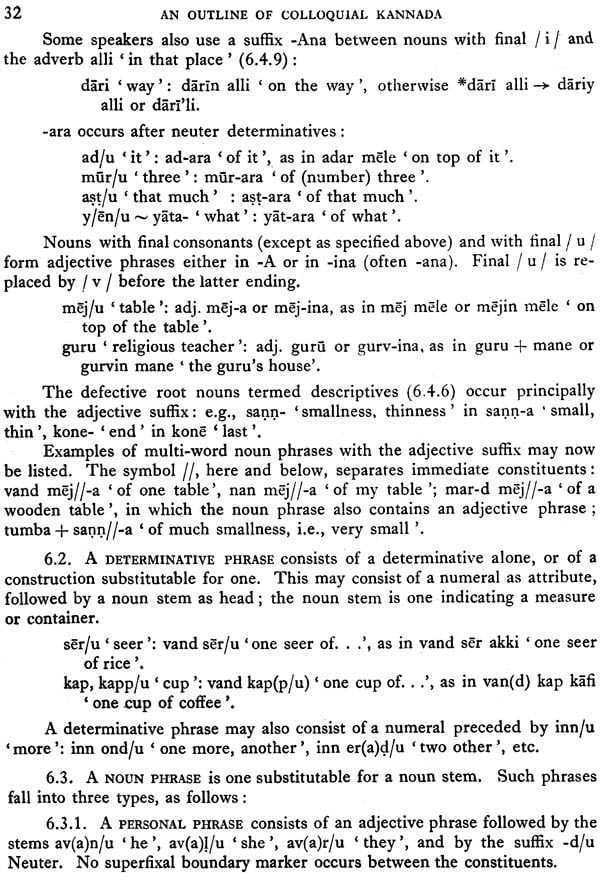
An Outline of Colloquial Kannada
Book Specification
| Item Code: | NAM075 |
| Author: | William Bright |
| Publisher: | Deccan College Postgraduate and Research Institute |
| Language: | English |
| Edition: | 1992 |
| Pages: | 84 |
| Cover: | Paperback |
| Other Details | 9.5 inch x 7.0 inch |
| Weight | 170 gm |
Book Description
The Kannada language–phonemically/kannada/, Anglicized is Kanarese–was claimed in the 1951 Census as the language of 14,471, 764 persons; it is thus third among the Dravidian languages in number of speakers. Since the states reorganization of 1956, most of the Kannada-speaking area of South India has been united in the state of Mysore. The written form of the language is relatively uniform throughout the state, but differs markedly from the various spoken dialects, which vary according to geographical area and social level. Literary Kannada has been described in the grammars of KITTEL, and SPENCER, and is also the principal form of the language presented in KITTEL’s standard dictionary. The present work, on the other hand, is offered as a first approximation to a grammar of the spoken language. I hope that linguists of native Kannada speech will find it useful as they work toward a more perfect formulation.
The colloquial Kannada described in this study is essentially the everyday speech of educated city-dwellers in the “old” Mysore state–that is, the state as it existed before the redrawing of boundaries in 1956. Within this range, considerable variation exists and is described in this work. However, as the principal informants were of the Brahmin community and natives of Bangalore, a bias in the direction of their speech may be found in the description. Other informants were of the Lingayat and Okkaliga communities, and from Mysore, Hassan, and Tumkur districts.
As all the informants were literate in Kannada, it was sometimes difficult to elicit purely colloquial Kannada from them, as distinct from the literary language. Indeed, some informants proved unable, under the conditions of elicitation, to furnish anything but literary Kannada. The difficulty was largely overcome with a tape recorder, by the use of which fairly spontaneous conversation could be transcribed.
Research was carried on during a visit to India of about twenty months, as a Junior Linguistics Scholar of Deccan College Postgraduate and Research Institute, Poona. My thanks go to Prof. M. B. EMENEAU of the University of California, Berkeley, for my introduction to Dravidian studies; to Dr. S. M. KATRE, Director of Deccan College, for help and encouragement throughout my stay in India; to Prof. T. N. SREEKANTAIYA of Maharaja’s College, Mysore, for the benefit of his expert knowledge of Kannada linguistics; and to Drs. Gordon FAIRBANKS and H. A. GLEASON Jr., Visiting Professors of Linguistics at Deccan College, who provided helpful criticism of my earlier descriptive formulations. I also owe special gratitude to Sri H. S. BILIGIRI, who worked with me both as informant and as collaborating linguist. Finally, I wish to express my appreciation for the help of the following informants: H. S. ANANTANARAYANA, G. S. BHAVANI CHETTY, P. N. C. KESHAVA, T. S. NARAYAN RAO, C. P. PRAMILA, L. SATYANARAYANA RAO, P. R. SHANTHA RAU, K. V. SREEKANTISH, Y. V. SUBRAHMANYAM, and A. VISHAKANTAIAH.











